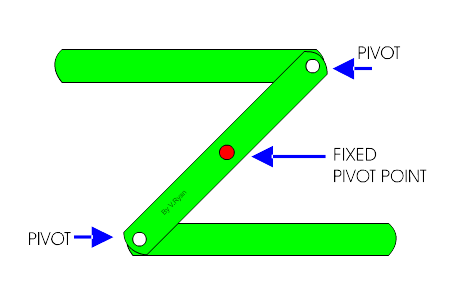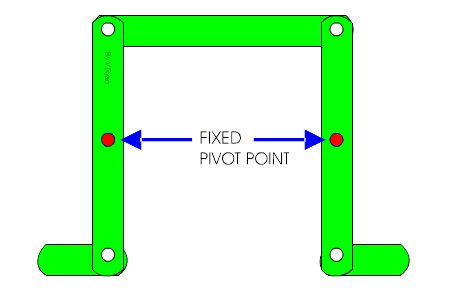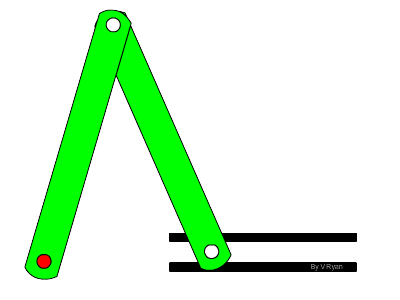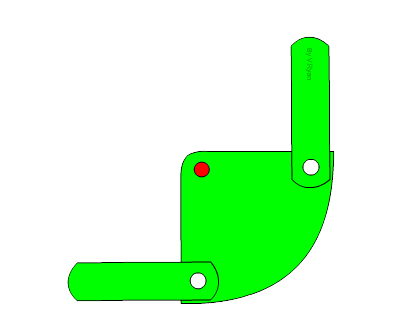| CLICK HERE FOR INDEX PAGE | |
| LINKAGE MECHANISMS | |
| V. Ryan © 2002 - 2020 | |
|
Linkages are a vital mechanism and many examples can be seen around us. The most common types of linkage are shown below. |
|
|
REVERSE MOTION LINKAGE: As the top rod moves to the left the bottom rod moves to the right. The bars move in opposite directions. Another way of describing this linkage is the direction of movement in one rod is reversed in the other rod. The fixed pivot is the centre of rotation. EXAMPLE. |
|
 |
|
|
PARALLEL MOTION LINKAGE: As the large rod at the top of the diagram moves to the left the two small rods at the bottom move to the right. All the rods are parallel to each other. EXAMPLE. |
|
 |
|
|
CRANK AND SLIDER LINKAGE: The rods move forwards and backwards in slider. The fixed pivot anchor the linkages to one place. EXAMPLE. |
|
 |
|
|
BELL CRANK LINKAGE: This linkage allows horizontal movement to be converted to vertical movement. It also works the opposite way round. A practical example of this is the brake mechanism on a bicycle. EXAMPLE. |
|
 |
|
|
|
|